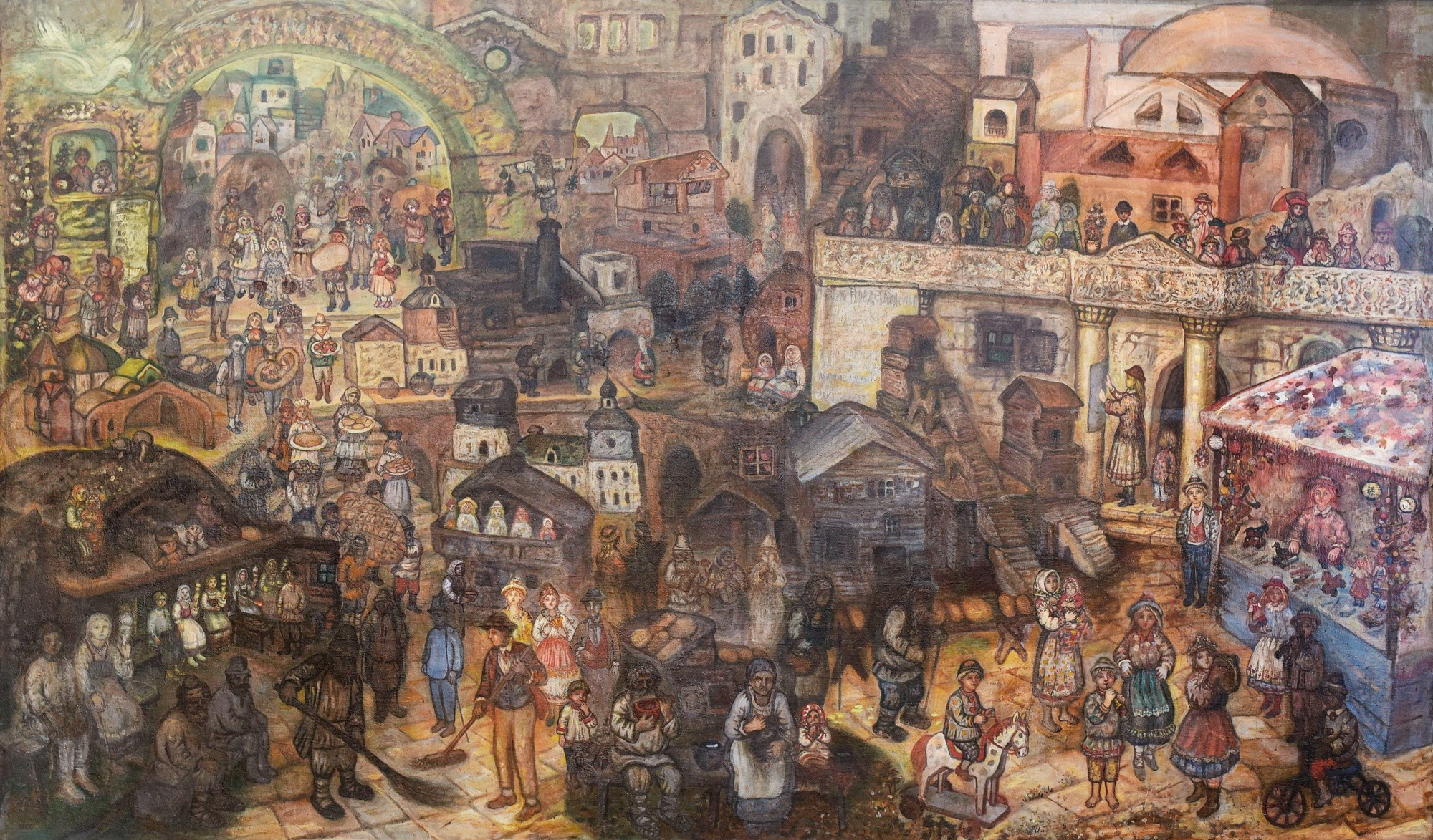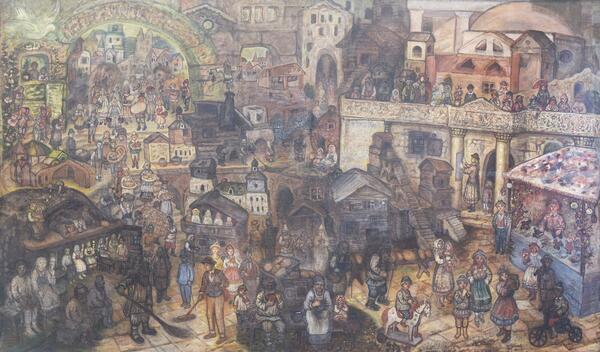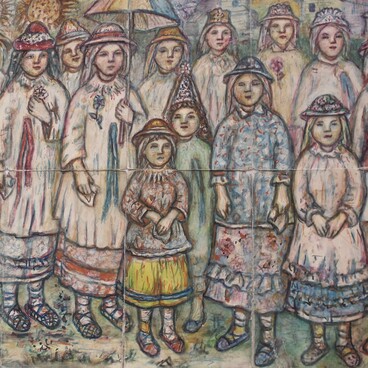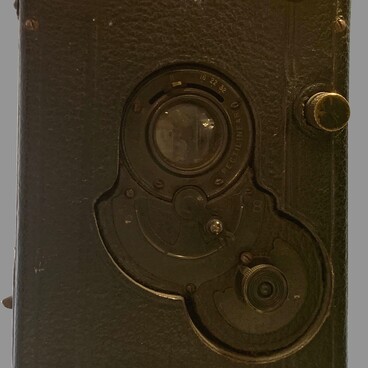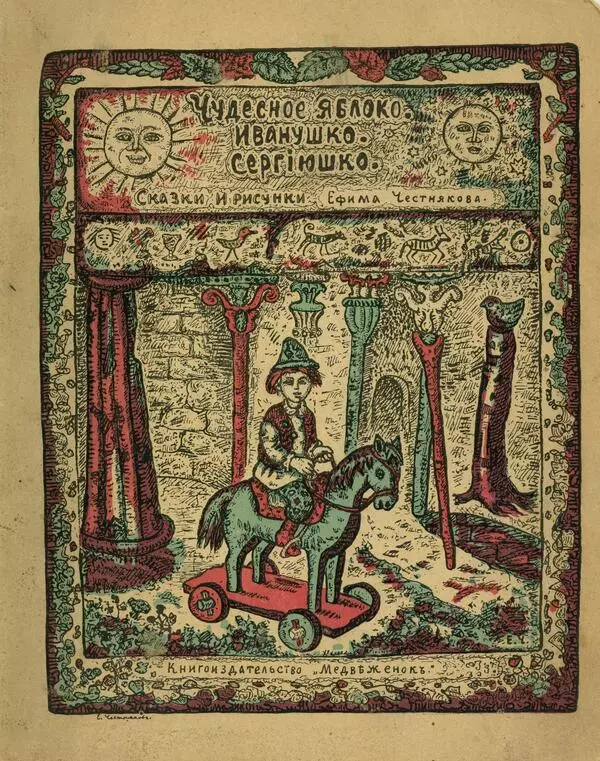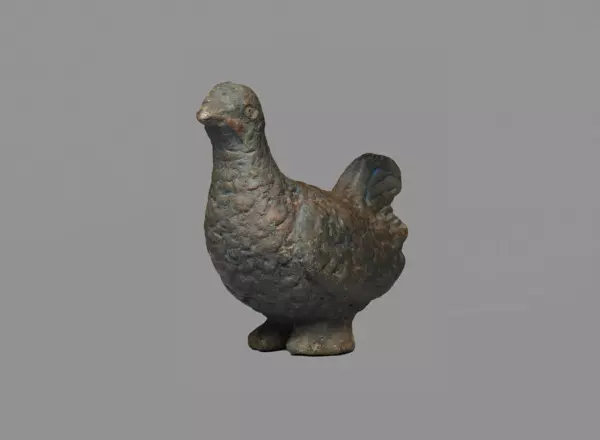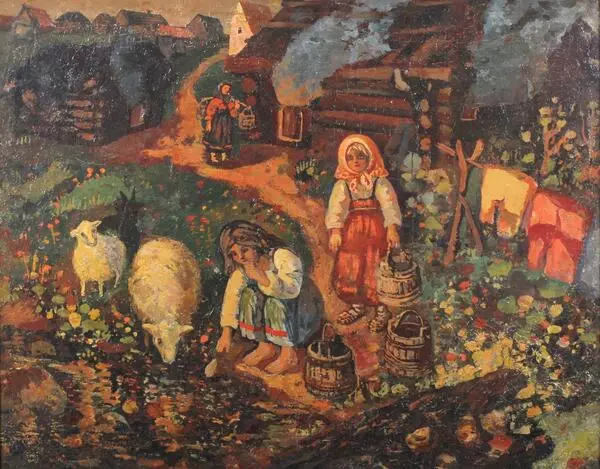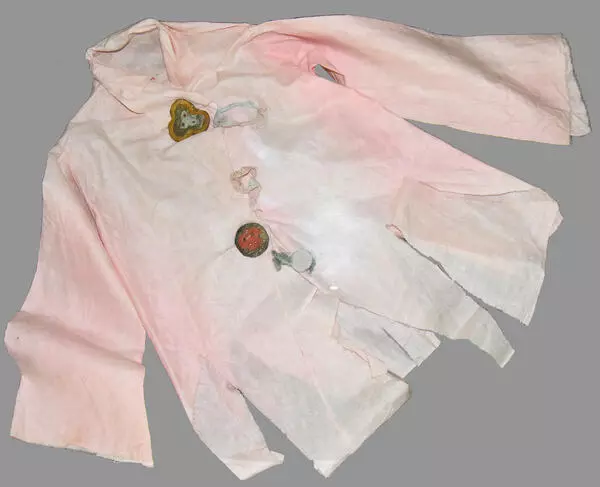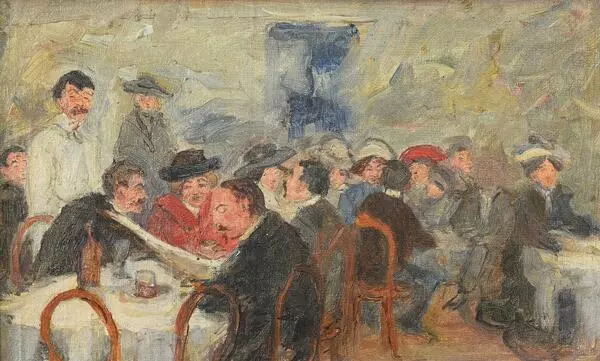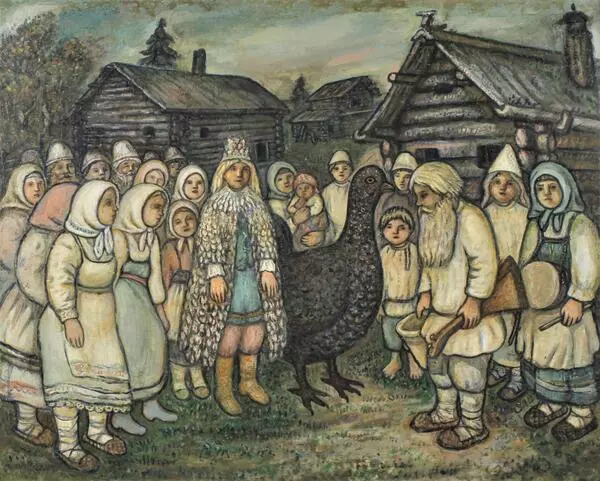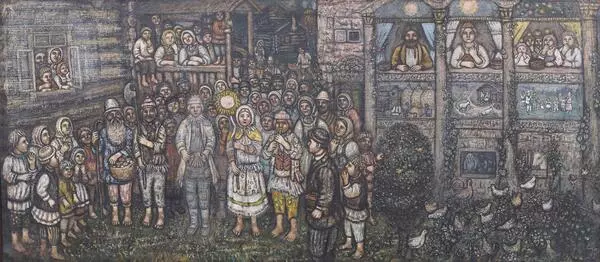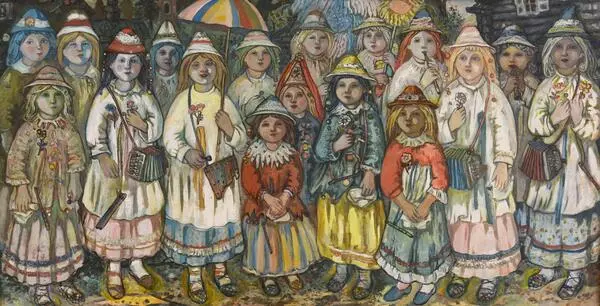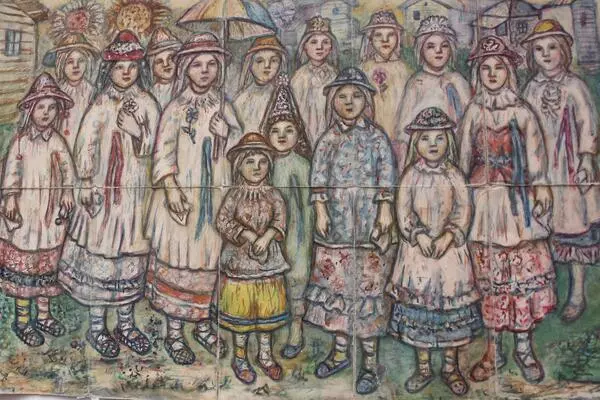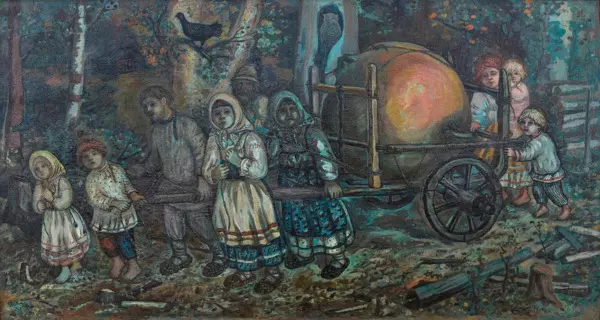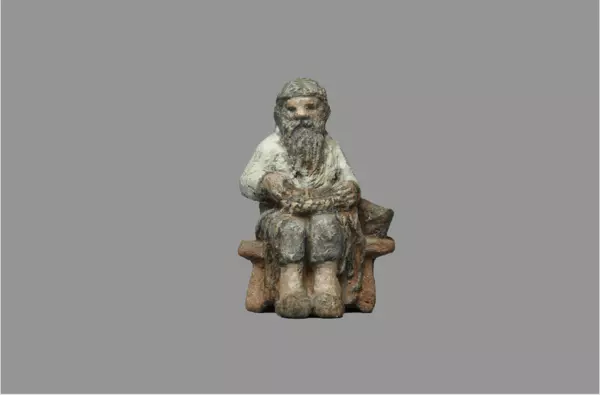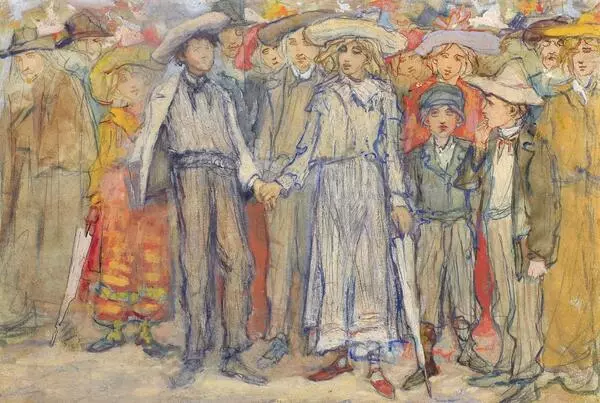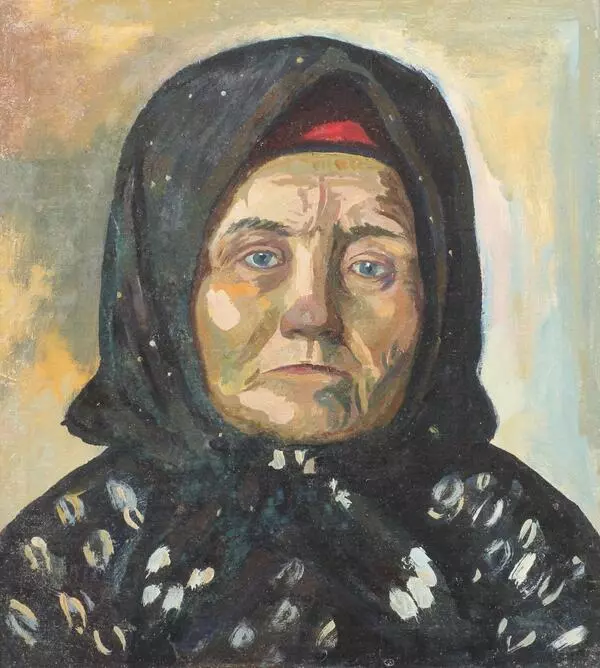One of Yefim Chestnyakov’s largest paintings on a canvas is the “Entry into the City of Universal Welfare”, which was handed over to us in five separate parts and restored owing to the efforts of talented experts, Valeria Tanayeva and Sergey Golushkin. The artist probably worked on it for more than a year. “Entry into the City of Universal Welfare” is an enormous painting with numerous figures depicted on it. There are children, adults, the elderly as well as young men and women. And each one of them is busy with their own tasks: an old man is sweeping the street; an elderly woman is churning sour cream; a boy is playing the pipe, a young girl - the tambourine while another is dancing, and people on the balcony of the palace are relaxing and observing what is happening on the square. Through the archway of the entrance, an entire crowd of people is coming into the city. The way they and certain individuals are moving is not very dynamic or expressive. Everything is done in a steadfast and committed manner without interruption. The people are calm and content. An abundance of bread, berries and other foods is the norm here. Hence, their poses and movements appear somewhat static and unchanging. What we see in front of us is the artist’s vision of a new world and a new way of life where the past, the present and the future are intertwined.
Although, at first glance, the art work appears to have been painted in a haphazard manner, there is, in fact, certain logic to it. We are not just looking at a city, built according to a specific urban plan, but also a real village constructed in a manner typical of northern regions of Russia. While working on this painting, the artist appeared to have followed a seemingly well-known and carefully thought through plan. One gets the impression that Yefim Chestnyakov painted it in a similar manner to the way a tapestry-maker — artist weaves an art work: by starting at the bottom, having already decided ahead of time where one figure/ object or another would be. In general, his creations were characterized by the careful thought the artist put into their subject matter and composition. In fact, Yefim Chestnyakov’s notebooks contain some repeated sketches. This indicates that the artist never lost sight of his most important, key concepts, which he wanted to portray via his works of art as precisely as possible.
Although, at first glance, the art work appears to have been painted in a haphazard manner, there is, in fact, certain logic to it. We are not just looking at a city, built according to a specific urban plan, but also a real village constructed in a manner typical of northern regions of Russia. While working on this painting, the artist appeared to have followed a seemingly well-known and carefully thought through plan. One gets the impression that Yefim Chestnyakov painted it in a similar manner to the way a tapestry-maker — artist weaves an art work: by starting at the bottom, having already decided ahead of time where one figure/ object or another would be. In general, his creations were characterized by the careful thought the artist put into their subject matter and composition. In fact, Yefim Chestnyakov’s notebooks contain some repeated sketches. This indicates that the artist never lost sight of his most important, key concepts, which he wanted to portray via his works of art as precisely as possible.
